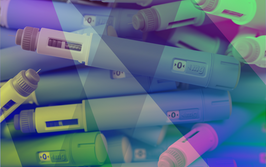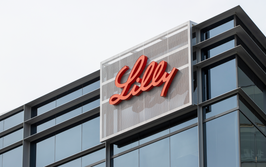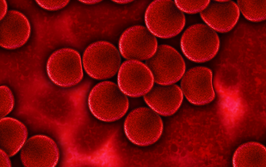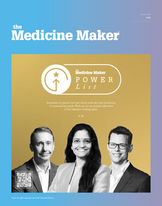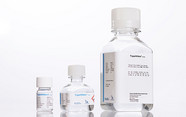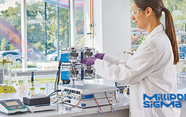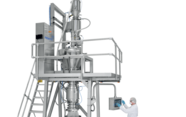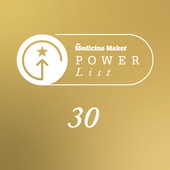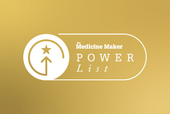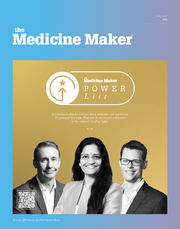
Worst-Case Scenarios and Ideal Facilities in Fill-Finish
Is the complexity of the fill-finish process under appreciated in pharma manufacturing? Four experts discuss why it’s important to get fill-finish right, and what ideal processes should look like.
Stephanie Vine | | 7 min read | Hot Topic
According to West’s Laura Englander, “Drug substance manufacturing, which precedes the fill-finish step, is a complicated process, especially when it comes to biologics. In comparison, fill-finish can be seen as a simpler process with less complexity, but there are many technical aspects to consider to ensure quality, sterility and safety.”
Mistakes in fill-finish can lead to project delays, increased costs – and even company failure. In a recent discussion, four experts looked at the perception of fill-finish activities and best practices for success.
Here, we ask four experts to look back on key advances in fill-finish over the last 5 years, worst-case scenarios, and how facilities should look in an ideal world.
Read the previous discussion here.
Meet the Experts
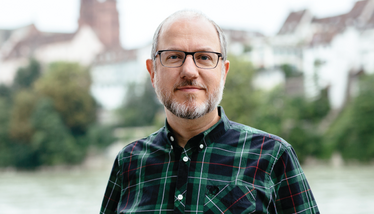
Hanns-Christian Mahler, CEO and board member at ten23 health
Hanns-Christian previously led the drug product services business unit at Lonza AG, and has worked in leadership roles at Roche and Merck KGaA. He has extensive expertise in formulation development, process development and validation, sterile manufacturing, and regulatory submissions with numerous IND/IMPD and BLAs.

Kelly Christiansen, VP, Drug Product Operations at Grand River Aseptic Manufacturing
Kelly is a goal-focused operations professional with over 30 years of experience in the life sciences manufacturing environment. He has a strong background in Lean Six Sigma methodologies and consistently demonstrates his commitment to continuous improvement in productivity, quality, safety, and processes through innovation and customer commitment.
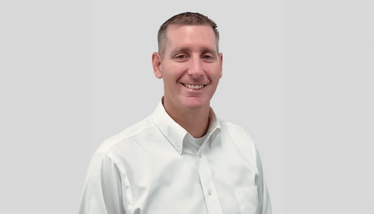
Josh Russell, VP, Technical Sales at AST Inc.
Josh has been leading the design and implementation of new, innovative technologies within the life sciences for over 20 years and has a passion for developing solutions that support and drive breakthroughs in patient-centered medicine. His extensive experience includes spearheading the design and development of adaptive robotic systems for aseptic processing, now widely used throughout the pharmaceutical manufacturing industry.
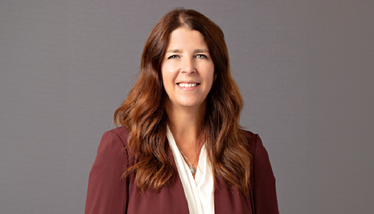
Laura Englander, Sr. Director of Market and Competitive Intelligence at West Pharmaceutical Services
Laura brings over 25 years of invaluable experience within the life sciences industry, encompassing roles in medical devices, CDMOs, and pharmaceuticals. With a robust focus on sales and marketing leadership, Laura has consistently demonstrated her expertise in navigating complex market dynamics and driving growth. In her current role, Laura leads a dedicated team at West responsible for delivering critical insights into markets, the industry development pipeline, and competitors. Her team is adept at foreseeing disruptions, identifying emerging technologies and adjacencies, and understanding the potential business impact of these factors. Laura's comprehensive understanding and forward-thinking approach make her a key contributor to ensuring West stays ahead in a competitive and ever-changing landscape.
How have fill-finish operations and technologies advanced over the last 5 years?
Laura Englander: Fill-finish operations now incorporate more flexible equipment, as well as smaller batch size capabilities to adequately support personalized and combination drug products. Even prior to the roll out of the Annex 1 revision, there was increasing adoption of isolator and RABS technology. We’ve also seen more implementation of single use technologies and ready-to-use packaging components to minimize cleaning/cleaning validation; robotics/automation to minimize manual processing steps; linear peristaltic pumps to support low fill volumes of high value drug products; digital twins to replicate and simulate outcomes within fill-finish; and more sustainable primary packaging technologies such as thin walled glass vials and elastomers made with novel barrier films.
Josh Russell: Advances in robotic automation to minimize or remove operator interventions have all but eliminated the need for human intervention in drug manufacturing processes. Additionally, there have been exciting improvements in flexible, adaptive lines that can handle many different containers and processes on a single manufacturing platform.
Hanns-Christian Mahler: Regulations have (thankfully) been updated during recent years to improve sterility assurance levels. For example, Annex 1 requirements now define expectations for sterile manufacturing, including adequate filling facility design and environment, contamination control, and approaches such as PUPSIT – pre-use post-sterilization integrity testing.
What are the worst-case scenario disasters that can happen if there are problems in fill-finish?
Englander: Worst case scenarios within the operational environment include batch deviations or even complete batch rejection. Regulatory observations also have the potential to shut down facility operations for an extended period of time, which may impact the supply of medicines to patients.
Kelly Christiansen: The absolute worst-case situation is injury or fatality to patients. Aseptic processing is a high-risk operation because the sterilization step occurs prior to container closure. However, with a robust quality management system and the right technology, such as filling isolators, automated inspection units, and integrated packaging solutions with serialization, the risk is substantially lower.
For drug developers that outsource their fill-finish operations, what red flags should they be aware of?
Mahler: Companies should choose their drug product CDMO wisely! Choose a partner who thinks beyond the sole execution of “fill-finish” of liquid into a container. Partner with someone who thinks holistically. Does your CDMO partner have formulation development and process development capabilities and expertise in house? Do they operate sterile filling in isolators in Class C environments? Have they implemented Annex 1 requirements, such as PUPSIT? Which QC testing can they perform and how do they approach the control strategy?
Englander: Drug developers need to fully vet their CDMO partners from a capability, process, and expertise standpoint. Ensuring the CDMO has experience in working with formulation development for the type of molecule you have will ensure the best outcome for de-risking and ensuring speed to market… or that you fail fast.
Red flags include a lack of experience in developing the molecule type in your API; experience in filling but not in formulation development; experience in some drug packaging formats but not others; and presence in only limited geographies. A good CDMO should be familiar with all major regulatory frameworks and have demonstrable experience in the technology transfer of complex drugs. Also, look at their infrastructure. Do they use isolators or RABS? Do they use advanced equipment such as automated visual inspection systems? Do they have adequate supplier and material qualification procedures?
Trust, as with any relationship, is key in the process. Outside of the general controls around the development and manufacturing process, you will need to build trust and become a partner with your CDMO. Make sure you are part of the process and have complete confidence in their ability to be there for you.
Describe your ideal fill-finish facilities or technologies of the future…
Englander: The facilities of the future will require utmost flexibility and agility to ensure new modalities can be aseptically filled in different primary packaging formats with very little human intervention. For instance, drug product manufacturers using isolators can alternate between low volume unit batches for clinical operations and higher throughputs for drug production, with no human intervention from loading components all the way through to automated visual inspection of each unit. The equipment will also have integrated machine intelligence, predictive maintenance, closed loop process control capabilities, enabling higher uptime and greater operational efficiency. Also, specifically for cell therapies, which currently require closed vial filling and subsequent laser resealing, advancements in containment technologies should enable simpler operational steps, maintaining consistency with traditional vial filling.
Christiansen: A facility of the future would have a well-designed layout with efficient and controlled material and personnel process flows to minimize waste through handling and avoid potential points of cross-contamination. There would also be more robust isolator equipment and the use of robotics, complemented by fully automated inspection technologies that can remove all identified defects and confirm the integrity of each unit at high speed, regardless of the solution characteristics inside the container. This would be monitored and controlled by an MES that is fully integrated with the entire equipment train from raw material receipt to product shipment, through the use of AI. The system would identify trends in quality deficiencies that lead to unnecessary defective product and equipment reliability issues, which lead to process delays. All of this would be erected on an environmentally friendly campus.
Russell: Autonomous systems and developments in AI will become more prevalent in manufacturing operations and provide additional intelligence to aseptic filling lines. The future facility will require fewer people and utilities, and will be smaller and more nimble than today’s facilities. These types of advancements are necessary to produce the more patient-centric products that are in early stages of clinical development today – and have exciting ramifications for the future of drug development.

Making great scientific magazines isn’t just about delivering knowledge and high quality content; it’s also about packaging these in the right words to ensure that someone is truly inspired by a topic. My passion is ensuring that our authors’ expertise is presented as a seamless and enjoyable reading experience, whether in print, in digital or on social media. I’ve spent fourteen years writing and editing features for scientific and manufacturing publications, and in making this content engaging and accessible without sacrificing its scientific integrity. There is nothing better than a magazine with great content that feels great to read.


